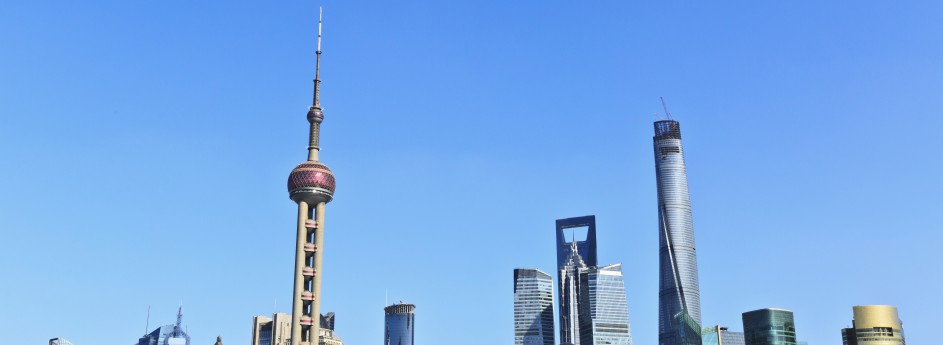Chinese Auto Makers Creating Jobs in North America
In contrast to the usual dribble about Chinese companies taking away good-paying jobs from hard-working North American workers, this piece corrects some basic misperceptions about the changing landscape.
Chinese industry is evolving from a user of foreign capital to an exporter of capital not only to the developing world but also to developed countries and even to industrial heartlands in North America. Public perceptions should gradually improve as more Chinese industrial companies position their manufacturing plants this side of the Pacific. On the other hand, if they fail to handle sometimes difficult labour relations well, do some damage to the environment, engage in certain shenanigans, or are too successful and grab big chunks of the market, perceptions and opinions can quickly turn for the worse.
The best strategy for Chinese companies, especially in the early phases, is to maintain a low profile, hunker down, and manage their operations well, and eventually surpass their native counterparts in efficiency and quality.
Seeking to build trust and establish themselves as credible mainstream suppliers, firms like SAIC Motor Corp., Changan Automotive, and Sichuan Bohong Industry have quietly set up manufacturing plants in Michigan, Ohio, and Ontario.
http://www.thestar.com/autos/2014/12/04/chinas_automakers_making_north_american_jobs_business_driver.html
China to Build Thailand High Speed Rail
Updating previous posts on China’s HSR diplomacy, Thailand’s parliament has just approved a MoU for China to build a 867 km line linking Nong Khai in the north to Bangkok and other cities in the south close to the Gulf of Thailand.
Since the route starts in Nong Khai bordering Laos where Laotian capital Vientiane sits across the Mekong River and the Chinese are building a major rail link to and in Laos, it most likely will serve as the second phase of the HSR line from China through Indochina to eventually connect with Kuala Lumpur, Malaysia and ultimately Singapore. The People’s Daily Online reports the Chinese government expects the railway to be put into operation by 2020 which will shorten travel time between Kunming, capital of Yunnan province, and Singapore to less than 14 hours.
Phase I of the overall route began construction last April. It passes through Mohan, a border town with Laos and Wangrong, a popular Chinese tourist city, and ends in Vientiane. Construction of a railway logistics center in Mohan has already begun.
According to the Intergovernmental Agreement on the Trans-Asian Railway Network (TARN), the Kunming-Singapore HSR line totaling 3,900 kilometers will serve as the central line of the southeast section of TARN . Once TARN is fully completed, Vietnam and Cambodia will also be linked with Thailand and Myanmar to form a regional hub centering on the Mekong River Basin where some 300 million people reside.
Thai National Legislative Assembly (NLA) yesterday approved a draft memorandum of understanding to be signed with China for the development of a dual-track railway system.
Transport Minister Prajin Juntong sought approval for the MoU with China to build a double-track standard-gauge railway covering the 734-kilometre route linking Nong Khai, Khaeng Koi and Map Ta Phut and the 133km Khaeng Koi-Bangkok route. The cost of the project has not yet been evaluated.
The deal on the railway project was made last month when Prime Minister General Prayut Chan-o-cha visited China to attend the Asia-Pacific Economic Cooperation Summit. The junta had mapped out a strategic plan for land transport in July, and Deputy PM Prawit Wongsuwan together with Deputy Foreign Minister Don Pramudwinai and junta adviser Somkid Jatusripitak visited China in October to pave the way for this deal.
The interim Constitution’s Article 23 says NLA approval is required for any agreement with a foreign country that might have implications on economic development. The NLA endorsed the MoU draft with 187 votes, while seven abstained. The MoU will be effective for five years after being signed, indicating that China will be responsible for construction and will develop the railway project. China will also conduct a feasibility study and prepare the project, Prajin said. The government wants the construction to begin by 2016, he said.
– The Nation (Thailand)
China’s GDP By PPP Now Bigger Than US
The International Monetary Fund (IMF) forecasted this tectonic shift a few months back but now it is official – measured by purchasing power parity (PPP), China’s GDP is larger than the US’s. Despite certain flaws, PPP is arguably a much better measure of domestic economic activity than GDP by exchange rate calculations. (This doesn’t include the ‘gray economy’ – under-the-table activity that cannot be included in official statistics. Some economists estimate that it may be as large as 1/4 of the economy.)
With the exception of rent and house buying in the biggest cities along with big-ticket items such as cars, major appliances, and hard wood furniture, basic living for the average Joe is fairly inexpensive. A reasonable salary for office workers in the capital is around 5000 RMB/month but a significant portion of the population earns much less, especially migrants. (Of course, the sky is the limit for high-flyers and MNC executives.) Wages and prices generally decrease as you go down to second, third, and fourth-tier cities, especially if you move inland to central and western China, not to mention the countryside.
Just anecdotally, in Beijing, if you use a transit card that provides a discount, a ride on Beijing‘s plentiful buses within the 5th Ring Road costs just 0.4 to 0.8 kuai (RMB) or $0.065 to $0.13 and the rapidly expanding subway 2 kuai ($0.32) regardless of distance although tickets are going up in the new year and partially measured by distance. Taxis will run you 14 kuai within 4 km, if not stuck in traffic. Mediocre speed internet costs around 133 kuai ($21.70) a month if you pay for a full-year’s service.
If you buy at the farmer’s market, you can procure sufficient quantity and variety of vegetables and fruit for a week for less than 150 kuai. Already cheap, shoppers constantly haggle with the farmers over price. (Produce at supermarkets are usually marked up substantially.) Of course, meat costs a lot more, especially beef and mutton but pork and farm-raised fish are more reasonable. If you ride a bike, a flat tire can be fixed for 3 kuai and major parts replaced for less than 50. Depending on your preference, a haircut can cost anywhere from 3 kuai on the street to 40+ in posh parlors. (That translates to roughly US$0.49 to $6.5+). As for vacations, 2000-3000 kuai can get you to Hong Kong/Macau, South Korea, Japan, or Southeast Asia for a few days. Needless to say, domestic vacation packages are much cheaper.
But, let’s not be too congratulatory as the country still has a long way to go before its achieves developed status. China’s exchange rate GDP will not catch up to the US for another decade or more. Even measured by PPP, given that China’s population is roughly 4 times that of the US, its per capita income is only 1/4 of the US’s. And there are still over 150-200 million people in remote areas living under $2 a day. China does not yet have a medical care system that covers everyone and despite on-going reforms to the household registration system, migrants remain second-class citizens unable to reside permanently in the cities.
Conservatively speaking, it will take China another 40 years of sustained development before per capita living standards come close to that in the developed world.
There’s no easy way to say this, so I’ll just say it: We’re no longer No. 1. Today, we’re No. 2. Yes, it’s official. The Chinese economy just overtook the United States economy to become the largest in the world. For the first time since Ulysses S. Grant was president, America is not the leading economic power on the planet.
It just happened — and almost nobody noticed.
The International Monetary Fund recently released the latest numbers for the world economy. And when you measure national economic output in “real” terms of goods and services, China will this year produce $17.6 trillion — compared with $17.4 trillion for the U.S.A.
As recently as 2000, we produced nearly three times as much as the Chinese.
To put the numbers slightly differently, China now accounts for 16.5% of the global economy when measured in real purchasing-power terms, compared with 16.3% for the U.S.
This latest economic earthquake follows the development last year when China surpassed the U.S. for the first time in terms of global trade.
I reported on this looming development over two years ago, but the moment came sooner than I or anyone else had predicted. China’s recent decision to bring gross domestic product calculations in line with international standards has revealed activity that had previously gone uncounted.
These calculations are based on a well-established and widely used economic measure known as purchasing-power parity (or PPP), which measures the actual output as opposed to fluctuations in exchange rates. So a Starbucks venti Frappucino served in Beijing counts the same as a venti Frappucino served in Minneapolis, regardless of what happens to be going on among foreign-exchange traders.
Make no mistake. This is a geopolitical earthquake with a high reading on the Richter scale.
PPP is the real way of comparing economies. It is one reported by the IMF and was, for example, the one used by McKinsey & Co. consultants back in the 1990s when they undertook a study of economic productivity on behalf of the British government.
– MarketWatch columnist



